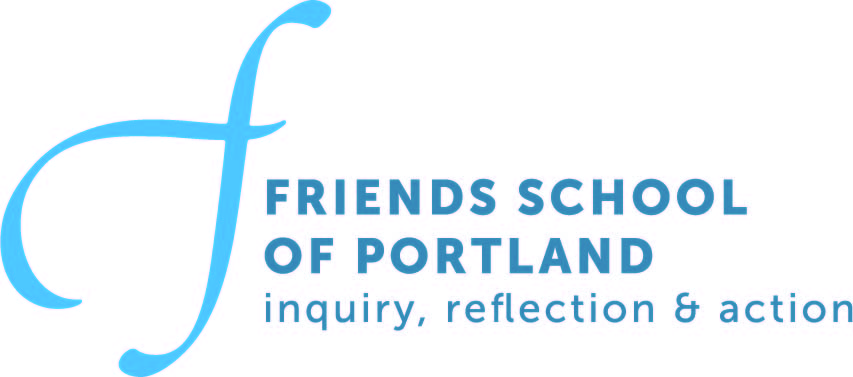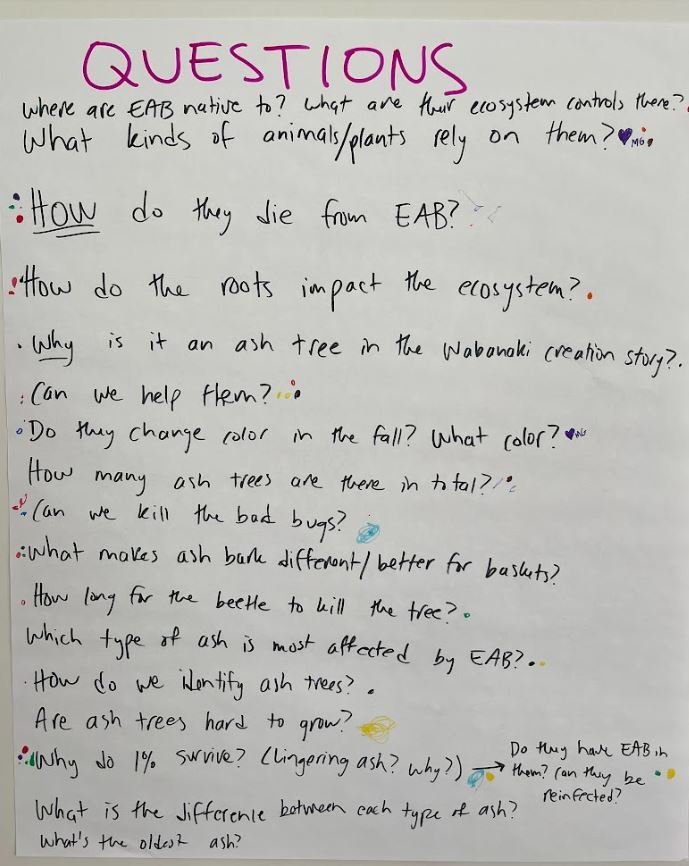A seventh-grade student described how “it feels good to know that what you are learning about is something that you can help with.” He was speaking about his science class research project through the University of Maine’s Ash Protection Collaboration Across Wabanakik (APCAW). This Fall, students mapped trees on our property, learned how to identify the presence of the Emerald Ash Borer, and ventured to the neighboring Royal River watershed to collect Black Ash Tree seed.
Seventh and eighth-grade students began their study of the Emerald Ash Borer with a visit from Nell at the Wild Seed Project. Students generated questions initial questions.
Where are EAB native to?
How do we identify ash trees?
Are they hard to grow?
Why is it an ash tree in the Wabanaki creation story?
Why do 1% of ash trees survive EAB?
What makes an ash tree better for making baskets?
How many ash trees are there?
Then students went to work discovering answers to their questions and asking new questions. The seventh and eighth-grade science classes worked with The Wild Seed Project, Falmouth Land Trust, and the University of Maine. Students watched They Carry Us With Them: Richard Silliboy – Jeremy Seifert to gain insight into the importance that black and brown ash plays in Wabanaki identity.
The Falmouth Land Trust and Wild Seed Project worked with students on identification and mapping. Students learned to identify the three main species of Ash in Maine, and in particular, identify the trees that we have on our school campus and the neighboring land trust property. Students then participated in the APCAW research project implementing protocols to identify the presence of EAB. And then, students had the opportunity to learn to harvest seeds from green ash and black trees near the Royal River.
In early November, seventh and eighth-grade students shared their field experiences and research on the Black Ash Tree and Emerald Ash Borer (EAB) over a state-wide Zoom with the Gulf of Maine Research Institute. Students also had the opportunity to ask questions with scientists working on this project. Later in November, students from King Middle School in Portland visited. Students shared their research and findings with peers just beginning a study of Ash trees.
"When I thought about what kind of science teacher I wanted to be, this is the work that I hoped I would be doing" shared 7-8 Science Teacher, Nicole.
Seventh-grade parent, Sarah Griffiths P’25, shared “ It is clear that my daughter and her classmates feel like true scientists as the data they are collecting is valued and will have a lasting impact in Maine’s forests.”




